I've always felt that the typical way to compile organizational farm rankings wasn't good enough. Judging any one prospect is tough enough using all of the available data, if you can get it all.
That said, we have trades, and the order in which players were drafted, as hard evidence of teams' opinions to anchor around.
Judging an entire farm system is much tougher. There is no hard data about the opinions that teams have about the strength of a system as a whole. And subjectively deciding that this group of 30 players is better than that group of 24 players is invariably full of bias; our brains can't consider all 54 players independently from those two teams, much less 30 teams' worth of prospects.
When I worked with an MLB club, then later at FanGraphs, and now at ESPN, I've used the Future Value system. It's scaled to WAR (an all-inclusive number of how good any player is, measured in wins) and adjusts for proximity to the majors and risk. On the team-by-team top 10s, I spelled out the FV grades for more than 300 players, listed about a dozen more prospects for each team, and I had about another dozen or so for each team whom I could have listed: the average number of players on my list for each team was 39. (For those wondering, I have updated the FV grades for recent Tommy John surgery announcements on Tigers LHP Joey Wentz, Padres RHP Reggie Lawson and Padres RHP Andres Munoz.)
The next step was something Craig Edwards did for us at FanGraphs last year, using the last couple of decades of players to figure out how much a prospect is really worth. The idea is to take every prospect and put them into a bin based on how they were ranked as a prospect, then look at what their career was like, then do some economic adjustments and assign values to each bin, which are then applied to every prospect. The output is a number that represents what a team would bid for each prospect if he was at auction and the team was trying to value its six to seven controlled years in the big leagues before the player hit free agency. The top prospect in baseball, Rays shortstop Wander Franco, is worth $112 million, which means we expect he'll produce $112 million of value above his salary for those six-plus seasons before he hits free agency; he might make $50 million in salary during that time.
The cutoff for what players make the list is still somewhat subjective. The concept is any player with real trade value: When you see a guy traded who isn't good enough to be on here, it's usually as a placeholder in a salary dump trade, whether it's a late-round pick in the low minors, a back-half-of-the-roster type in the middle minors or an upper-minors player who is likely to be on waivers in the next 12 months. Sometimes a player emerges late and I haven't updated his rating, most commonly at the lowest levels of the minors at the trade deadline, but updated scouting reports usually come to the surface the day of a trade.
Reducing complicated, unique people into numbers, and more specifically money, isn't a great feeling, but it's not done to change anybody's career, merely to measure which team is doing the best job at cultivating young talent. There are some instances where two teams are within a couple of million dollars of each other, and in those cases the advantage is given to the team that reached that value with the fewest amount of players. I've also made slight adjustments where teams benefited from having bulk value of prospects that, on average, aren't list quality. The Mariners (one spot), Giants (one spot) and Blue Jays (two spots) were the teams whose rankings were impacted in this regard. Functionally, think of the average value per player as the tiebreaker when two teams are close.
For this reason, I encourage you to look at the rankings in tiers; if one midlevel pitcher goes down with surgery and his grade is downgraded a notch or two, some systems could move down three or four slots. In total, there are 1,182 prospects and $6.53 billion of surplus value in the minor leagues by my system. A more complete picture of the young talent within an organization would include big league talent (most recently suggested by ESPN's Karl Ravech) -- that's on the coronavirus shutdown to-do list.
More from Kiley: Top 100 | NL team-by-team | AL team-by-team

1. Tampa Bay Rays ($471 million, 51 players, averaging $9.2 million)
The Rays are the best version of the sustained small-market contender, the highest-difficulty, high-wire act in baseball, and they're doing it in the toughest division to pull it off. The Rays' international program is no doubt in the top 5 and is probably first or second, along with the Yankees' organization. Tampa Bay's drafts have been strong of late, helped by extra picks. The pro scouting department is top notch, consistently finding undervalued talent via trade. And for a contending team, the Rays are making a lot of trades to add young players. Because of their player procurement and development machine, the Rays are playing the 40-man roster juggling game 24/7, swapping potential role players in the upper minors for ones in the lower minors. Due to their low payroll, when a role-player type hits arbitration, a league-minimum replacement is probably ready, so those established big leaguers are sent packing to get younger talent back. The pieces have long been in place for a true go-for-it move (three upper-level, well-regarded prospects for two years of Noah Syndergaard, for example), but this hasn't happened in part because of how good Tampa Bay has been at stockpiling personnel. There haven't been any gaping holes begging for a star to save the day. And consider this: If we erased Wander Franco, the top prospect in baseball (and the best in quite a few years), from this organization, the Rays would still have the top farm system in baseball, by exactly $1 million.

2. San Diego Padres ($358 million, 54 players, averaging $6.6 million)
The Padres find themselves in the spot the Royals were in after the 2012 season, coming off of a 72-win campaign, but looking to combine youngsters with veterans and a bit more payroll to make a traditional homegrown contender. The Royals missed the playoffs with 86 wins in 2013, then made the next two World Series, winning one of them -- that's basically the San Diego plan. The good news is the talent is in place to pull it off if things break right. LHP MacKenzie Gore and RHP Luis Patino should both open this year in Double-A and are 2020 MLB options to fill in behind RHP Chris Paddack and potentially form a playoff-caliber top of the rotation. C Luis Campusano and LF Taylor Trammell could both be ready in 2021 to take over two of the weaker spots in the lineup. LHP Adrian Morejon, RHP Michel Baez and RHP Ronald Bolanos are ready-made young arms to take over whatever roles are available on the pitching staff, while CF C.J. Abrams, CF Hudson Head, SS Reggie Preciado and SS Yeison Santana are a year or two behind them with everyday potential. Teasing performance out of Eric Hosmer and Jurickson Profar are two of the main keys, behind getting improvement from the young stars, to making a playoff run, but there's enough young depth here to give some margin for error.

3. Atlanta Braves ($286 million, 27 players, averaging $10.6 million)
The Braves are the upper-middle-market version of the sustained contender. GM Alex Anthopoulos walked into an enviable position with a cost-effective cornerstone (Freddie Freeman), a couple of All-Star level prospects who quickly found their footing in the big leagues (Ozzie Albies, Mike Soroka, Max Fried) and another prospect who is now the odds-on favorite to take the crown of Best Player on the Planet from Mike Trout (Ronald Acuna Jr). Anthopoulos has managed that situation well, not trading any of his upper level, impact-type young talent and only signing short-term free-agent deals to maintain flexibility. The 2019 draft has had surprisingly good early returns and the international program is getting its wheels spinning again as sanctions are close to ending. This has affected depth, particularly at the lower levels, and this system will tumble when all of the upper-level talent has graduated, probably by the end of 2021, but the farm acquisitions should backfill capably. The window is wide open and it may last for a while.
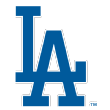
4. Los Angeles Dodgers ($279 million, 40 players, averaging $7.0 million)
The Dodgers and Yankees are the big-market version of the sustained contender, with a top-tier system to go with a perennial contender at the MLB level and enough payroll to keep any homegrown stars as long as desired. Both stand out in the area of 40-man-roster juggling to create optionable depth in order to deal with injuries in-season without losing prospect value on waivers. Both clubs are above average in both the draft and internationally, and both will add prospects when called for, often when trimming the potential 40-man roster fat before a roster crunch arises. They are also both notable for not going whole hog into every progressive movement in the game, maintaining a full complement (or even a bigger-than-expected complement) of scouts and associated budgets to go with top-notch analytics. The real question is which of these clubs will win a World Series to go with their accolades for process management?
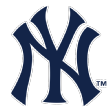
5. New York Yankees ($277 million, 54 players, averaging $5.1 million)
At this point last year, the Yankees were in the bottom 10 of our farm rankings at FanGraphs, based on the same methods I'm using here. We noted that the Yankees had a high variance system whose prospect list had about double the number of teenagers as any other list, so there was potential to rise quickly. Adding the only top-100 prospect in the 2019 international class (CF Jasson Dominguez) helped, but the next six ranked prospects were all upgraded a notch or two in the past year, joining reinforcements from a solid draft class and arguably the best international program in baseball. It's still a young system, so maybe only two players (RHP Deivi Garcia and RHP Clarke Schmidt) from the top 20 in the organization will get big league time in 2020, but there's more than enough talent here to either trade for reinforcements or to see continued appreciation in value to make up for two graduations in next year's ratings.

6. Detroit Tigers ($261 million, 39 players, averaging $6.7 million)
The Tigers, along with the Marlins, Mariners, White Sox and Padres, are the five organizations currently at various stages of a traditional tear-down rebuild: sell off the big league team for parts, go into talent collection mode and don't plan on contending or spending much in free agency for multiple years in pursuit of a homegrown, young, contending club. The Padres and White Sox have turned the corner and are now trying to add veterans to build contenders, while the other three clubs likely have one more year at the bottom of the standings before a wave of young talent helps dictate when the veteran-adding stage will happen. The Tigers might have more variance than the others since their best and first-arriving reinforcements are all pitchers (RHP Matt Manning, RHP Casey Mize, LHP Tarik Skubal), while their lineup of the future has only a couple of spots filled, with another likely coming from the No. 1 overall pick in the upcoming draft.
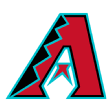
7. Arizona Diamondbacks ($261 million, 44 players, averaging $5.9 million)
The D-backs are the lower-middle-market version of the sustained contender, along with Minnesota. The Arizona system has everything you could want: upper levels, lower levels, hitters, starters, relievers, hit-first guys, upside bats, power arms, pitchability, international, domestic, homegrown and acquired. They'll be battling with the Padres for second place in the NL West and a wild-card spot, and they have all of their departments working together to find and cultivate talent: international amateur, domestic amateur, pro and player development. There's a reason why GM Mike Hazen's top lieutenants (assistant GMs Amiel Sawdaye and Jared Porter) both have future-GM buzz.
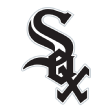
8. Chicago White Sox ($251 million, 32 players, averaging $7.8 million)
The White Sox have taken some lumps of late, with eight straight seasons under .500, but things appear to be turning the corner. Extensions have been handed out to core players LHP Aaron Bummer, SS Tim Anderson, 3B Yoan Moncada, CF Luis Robert and LF Eloy Jimenez, while veterans C Yasmani Grandal, 1B Jose Abreu, RF Nomar Mazara, DH Edwin Encarnacion and LHP Dallas Keuchel have been added or retained, young core pieces such as RHPs Lucas Giolito, Dylan Cease and Michael Kopech have arrived in the big leagues and recent top-5 picks 1B Andrew Vaughn and 2B Nick Madrigal aren't far behind. All of these recent moves have added up to the White Sox being in the middle of the pack in payroll and in the projected standings, with the young core to increase the wins without having to spend a lot of money to upgrade. The system, beyond those mentioned, is mostly higher-probability role players (league average to just below) types and there aren't many holes left to plug on the big league roster, so the low-hanging fruit is gone and it's time to see if these bets will pay off.

9. Seattle Mariners ($252 million, 38 players, averaging $6.6 million)
The Mariners are doing a power rebuild of sorts. They took an 89-win team from 2018 that didn't make the playoffs or have a window of extended competition ahead of it, won 68 games in 2019, and project to do something like that again in 2020. The plan all along was to have the farm system begin delivering potential impact players in 2021 and spike the payroll to support them, opening a window of contention to battle Houston, Oakland and Los Angeles. Nine of the M's top-10 prospects might be in Seattle by the end of 2021, two more top-10 overall picks will be added by then and they're landing some top-of-the-market impact internationally as well. They probably have one more year of adding young talent (via trading older talent) before flipping the switch.
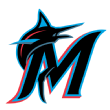
10. Miami Marlins ($251 million, 41 players, averaging $6.1 million)
The Marlins are sports' best example of cycling into contending, then turning on a dime and stripping a winner for parts. With two World Series titles in a short history in a major market, you'd think there would be more of a fan base for the Marlins, but the PR around these rebuilds hasn't been great. This season very likely will be their 10th straight below .500, so the length of this most-recent rebuild has been subpar. The start of this new ownership group's tenure was rocky, but the moves have been more cogent over the past year and this seems headed in the right direction. A hitter-focused 2019 draft under a new director has been received well and the international program is now fishing in the seven-figure waters with some success already. Miami is projected to be the worst team in the NL again in 2020, but this may be a top-5 system by season's end, with almost all of this year's top 10 at the upper levels or in the big leagues.

11. Pittsburgh Pirates ($248 million, 42 players, averaging $5.9 million)
Pittsburgh finally pulled the trigger on a long-needed regime change and should be looking at Oakland and Tampa Bay as examples. These three clubs are among the six lowest payrolls in the game, but the Rays and A's have figured out how to contend regularly without using their budget as an excuse. New GM Ben Cherington has the balanced, process-minded approach to pull this off. There are a lot of prospects on track to arrive in 2020 or 2021 at the top of this system, but the big league team has only a handful of core players who will be on the next playoff team. The good news is the rest of the division is in a glut, all projecting to land in the 80's in terms of wins. A power rebuild projecting to stay competitive this year and add more young talent to potentially contend in 2021 and 2022 could be fruitful.

12. Cleveland Indians ($244 million, 43 players, averaging $5.7 million)
The Indians have won 93, 91 and 102 games in the past three years, but it looks like the window could be closing soon, increasing the importance of filling holes from within. The Twins are emerging (with a top executive coming from Cleveland), the outfield situation is still not solved, their best player is most likely leaving after 2021 and the core of the last three years is diminished or gone. There are some strong replacements emerging (RHP Shane Bieber among them) or players who might reach the big leagues soon (3B Nolan Jones), but the AL Central has become much more competitive, and without a big margin for error in the payroll, Cleveland needs to keep executing. The international program is the best among the mid-market group, with hit-tool-forward types and projection arms, while their draft group also is solid, with a heavily model-oriented approach.

13. Minnesota Twins ($234 million, 42 players, averaging $5.6 million)
The Twins have quality depth to their system, along with five players in the top 100, and are in the glut of clubs where one trade in which they land a 101-150 overall prospect could get them as high as sixth in these rankings. They take more of a progressive, value-focused approach in the amateur markets, with strong player development, which tends to create a greater bulk of prospects, usually with 40 or more players on a list, even when they're contending. If I were creating a formula for the best-run organizations top-to-bottom, it would be some combination of recent MLB records, projected 2020 MLB record, young MLB talent and farm system rankings: Minnesota would be in the top five to seven overall.
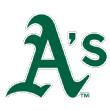
14. Oakland Athletics ($222 million, 44 players, averaging $5.0 million)
After bottoming out at 75 wins in 2017, Oakland has quietly won 97 games in back-to-back years and is projected in that area again for 2020. The A's have homegrown or buy-low players all over the roster, since the payroll isn't there to pay retail and they're not consistently picking high in the draft. They've taken an international strategy of trying to hit the top of the market early (since they can't get elite talent in free agency) and landed the second-best prospect in the 2019 class (SS Robert Puason). Similarly, they lean toward higher-variance draft prospects, so there's some boom (A.J. Puk) and bust (Kyler Murray, Austin Beck) among their high picks. With Jesus Luzardo, Puk, Sean Murphy and Jorge Mateo making up 70% of the value in the system and set to start the year at Triple-A or the big leagues, this group is set up to reinforce a contender (the first priority of a farm system) but may be in the bottom five by the end of the year.

15. St. Louis Cardinals ($216 million, 33 players, averaging $6.5 million)
The Cardinals stay under the radar in these industrywide audits. They compete most years, but aren't a perennial power, they have some money to sign free agents, but often lay in wait, they can be considered either old school or progressive, depending on whom you ask. They are never fully going all-in or rebuilding, so it's fitting that they're in the middle of these rankings.
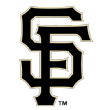
16. San Francisco Giants ($217 million, 37 players, averaging $5.9 million)
On the flip side, the Giants were a traditional-leaning contender for a long time and then busted, changed leadership and now are being reformatted in a more modern way under Farhan Zaidi. The international program has collected a number of exciting young hitters with big bat speed (headlined by Marco Luciano), they've done a solid job in the draft and they're in young talent-adding mode on the pro scouting side.

17. Baltimore Orioles ($211 million, 40 players, averaging $5.3 million)
Baltimore also is in the middle of a top-down rebuild, but the job for GM Mike Elias is more comprehensive than just updating some processes. With a background running the Astros' drafts, the industry watched closely last year for what Elias would emphasize in his first draft after the slam-dunk pick of C Adley Rutschman at No. 1. His first eight picks were all hitters and I'm a fan of the group. The org is in a full rebuild so it's in talent-addition mode on the pro side and in infrastructure build-up on the international side, but some mid-six-figure signings in Elias' first international class are getting positive early reviews.

18. New York Mets ($186 million, 31 players, averaging $6.0 million)
The Mets had an exciting 2019 draft, the first under new GM Brodie Van Wagenen. He took one of my favorite hitters in the draft (3B Brett Baty), then one of the best pure prep arms in the draft (RHP Josh Wolf), then a mid-first-round talent who slid for what are still unclear reasons (RHP Matt Allan), followed by arguably the best senior in the draft and the all-time SEC hit king (CF Jake Mangum). Van Wagenen's first year was marked by extreme outcomes, such as the stinging loss of CF Jarred Kelenic in the Robinson Cano/Edwin Diaz deal and the great rookie season of 1B Pete Alonso.

19. Cincinnati Reds ($185 million, 33 players, averaging $5.6 million)
The Reds are starting to turn the corner and making a run at winning the NL Central, which has cost them three top-100 prospects in the last year in RHP Josiah Gray (Dodgers), 2B Jeter Downs (Red Sox via Dodgers) and LF Taylor Trammell (Padres). Cincinnati's performance in the draft has been above average, while SS Jose Garcia and Aristides Aquino (aka Lazarus in right field) are the only possible regulars produced internationally in recent years.
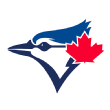
20. Toronto Blue Jays ($187 million, 38 players, averaging $4.9 million)
The Jays recently graduated two former top-10 prospects in 3B Vladimir Guerrero Jr. and SS Bo Bichette, with another in RHP Nate Pearson poised to make his big league debut in 2020. Losing three talents like that will be a big hit to any farm system. The domestic and international amateur departments both have been solid and the return on the Marcus Stroman trade propped up this list, but the Jays need some luck to go with potential stars turning into stars to compete in the AL East. With Ben Cherington and Steve Sanders leaving for Pittsburgh, there are some new decision-makers as well.
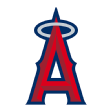
21. Los Angeles Angels ($183 million, 31 players, averaging $5.9 million
The Angels are in a spot where they need to compete this year -- and they have the best player on the planet along with the best two-way player since Babe Ruth and a $245 million dollar man, so that's a good start. Los Angeles used some farm depth to acquire Dylan Bundy and flipped first-round pick Will Wilson to clear payroll space. They've had some luck in both amateur markets playing the upside lottery, with LF Jo Adell and CF Brandon Marsh on the verge of the big leagues and CF Jordyn Adams doing a Byron Buxton impression. But the system is not very deep with projected quality contributors beyond that.

22. Philadelphia Phillies ($181 million, 39 players, averaging $4.6 million)
The Phillies also are in win-now mode and could use some results in the W column in 2020. They've done a solid job in the amateur markets, with a top 150-level prospect from each of the past three drafts and an international group that is top 5 in the game, turning lower-dollar signings into prospects at a high rate. There's plenty of quality and depth to fill holes at the big league level or put together a big trade or two, but this system alone won't be the core of a contender.
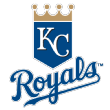
23. Kansas City Royals ($177 million, 39 players, averaging $4.5 million)
The Royals surprised much of the industry by turning to safe college pitching with their bounty of picks in 2018, but went back to their roots with upside bats at the top of the 2019 draft. A number of upside bats have floundered recently in this system, the international program hasn't produced potential above-average regulars of late (Adalberto Mondesi excepted, 2019 signee Erick Pena has a shot), and there hasn't been much procurement via trade, so the rebuild isn't moving as quickly as others.
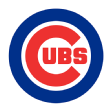
24. Chicago Cubs ($158 million, 43 players, averaging $3.7 million)
The Cubs, like Texas below, are looking to right the ship after falling behind a bit in recent years. Chicago has picked late due to big league success and has traded a number of young players (Gleyber Torres, Eloy Jimenez, Dylan Cease, Isaac Paredes) in that pursuit, which is a big part of why it is here in the rankings. The top of the 2018 draft is a step in the right direction and the international program has been solid the whole time, so turning the corner in development and focusing on adding to the young talent base should have good results.
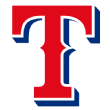
25. Texas Rangers ($148 million, 56 players, averaging $2.6 million)
The Rangers are looking to turn the corner in terms of embracing analytics and how that affects the development of their farm system and the big league team. For now, it's a deep system with lots of prospects, but no top-100 types at the moment. The Yankees were in this spot 12 months ago and things went pretty well for them; it remains to be seen if Texas can execute player procurement and player development at that level.

26. Houston Astros ($136 million, 40 players, averaging $3.4 million)
The Zack Greinke deal was an even bolder move that it appeared at the time. Losing Corbin Martin, J.B. Bukauskas, Seth Beer and Josh Rojas cleared out four close-to-the-big-leagues talents from an Astros farm system that was already struggling. This was due in large part to picking late in the draft because of big league success, but the international program also takes a bulk approach that doesn't produce many impact-type talents. With the league turned against them, the team scraping up against its payroll ceiling, and with multiple stars without much club control left, alongside a system that will be even lower when a few upper-level prospects graduate, things are more grim here organizationwide than casual fans might think.
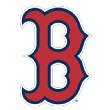
27. Boston Red Sox ($121 million, 36 players, averaging $3.4 million)
With the Mookie Betts trade in the rearview mirror and a new head of baseball ops, the Red Sox are embarking on a cleanup of the wreckage of Dave Dombrowski's tenure. The farm was hollowed out, but is improving and has a number of intriguing arrow-up types and solid amateur player procurement. It'll be interesting to see how the club sees its short-term competitive window; selling a few more pieces from the big league team would help the farm, but they also could attach prospects to bad contracts to help the big league team's payroll issues.

28. Colorado Rockies ($117 million, 30 players, averaging $3.9 million)
With clubs such as the Marlins, Tigers and White Sox finding various levels of success with their rebuilds, the Rockies are now the league's best example of a rudderless club. The big league team is in the bottom third of the league, the star player wants out, their second-best player will be a free agent in two seasons and the farm system is below average across the board. There's some young pitching, but there also are some bad contracts; the personnel here needs to get better.
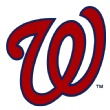
29. Washington Nationals ($111 million, 21 players, averaging $5.3 million)
The defending World Series champs have been notable during this run for having a relatively shallow prospect pool (fewer and lower draft picks due to free-agent signings and big league success doesn't help), but one that's always stocked with a top-tier talent or two. Stephen Strasburg, Bryce Harper, Anthony Rendon, Trea Turner (briefly), Juan Soto, Victor Robles and now Carter Kieboom is a nice run of top-25 overall prospects who have -- or project to -- return real big league value from a farm system that's always in the bottom third of the league. It's clearly part of a strategy, as multiple pitchers in this system (Jackson Rutledge, Mason Denaburg, Seth Romero) have frontline potential.
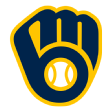
30. Milwaukee Brewers ($101 million, 44 players, averaging $2.3 million)
The Brewers have one top-100 prospect (SS Brice Turang, 96th) and only five more prospects who clear the 40 FV level. The international program has been doing pretty well of late, and the drafts have been solid in the first round but subpar beyond that in the past three years. The Christian Yelich trade cost a good bit of young talent, and a lot of young talent recently graduated (Josh Hader, Brandon Woodruff, Corbin Burnes, Keston Hiura) to a contending team.
